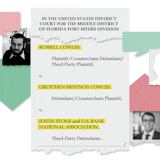Prices for houses are generally back to where they were during the housing bubble that preceded the financial crisis a decade ago. What's worse, flipping is back.
That is the speculative practice of buying houses hoping to quickly sell for a gain. One report this spring said there hasn't been this much flipping since 2006 — more or less the frenzied peak of the last housing boom.
Neel Kashkari of the Minneapolis Federal Reserve seems oblivious to all this, at least according to critics knocking Kashkari's recent essay about asset bubbles and what the Fed ought to do about them. Kashkari's entirely sensible answer: not much.
And he made an even better point, that, even if the Fed did have something smart to do, it's highly unlikely anyone at the Fed managed to correctly spot an asset bubble forming in the first place.
The Fed's main policy committee — on which he sits this year — has entered a quiet period, so he couldn't discuss his views further. He wasn't trying to debate the housing market in his essay, just share a little insight about what the Fed can and can't do about problems that develop in the economy. Kashkari has his own unhappy experience looking for bubbles.
It was 2006, he wrote, when he worked for U.S. Treasury Secretary Henry Paulson. The secretary had observed that some sort of financial crisis seemed overdue, and he dispatched Kashkari and others to go look for a likely catalyst for trouble.
They came back with various blowup scenarios well worth following, but they never even considered the risk of a national housing price collapse and mortgage meltdown. How could they have missed it?
Part of the problem in trying to spot an asset bubble is that it's a curiously difficult thing to define. It is not just surging prices for assets.


